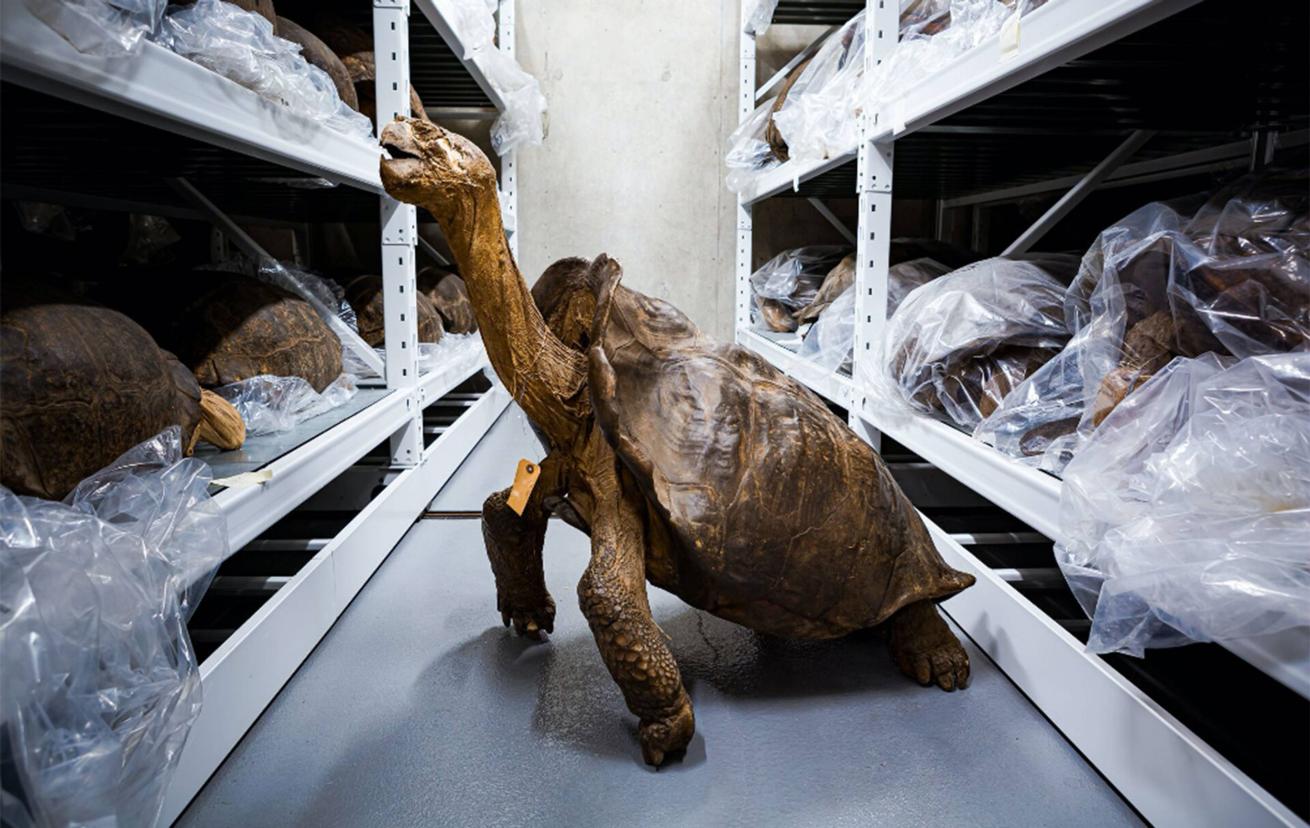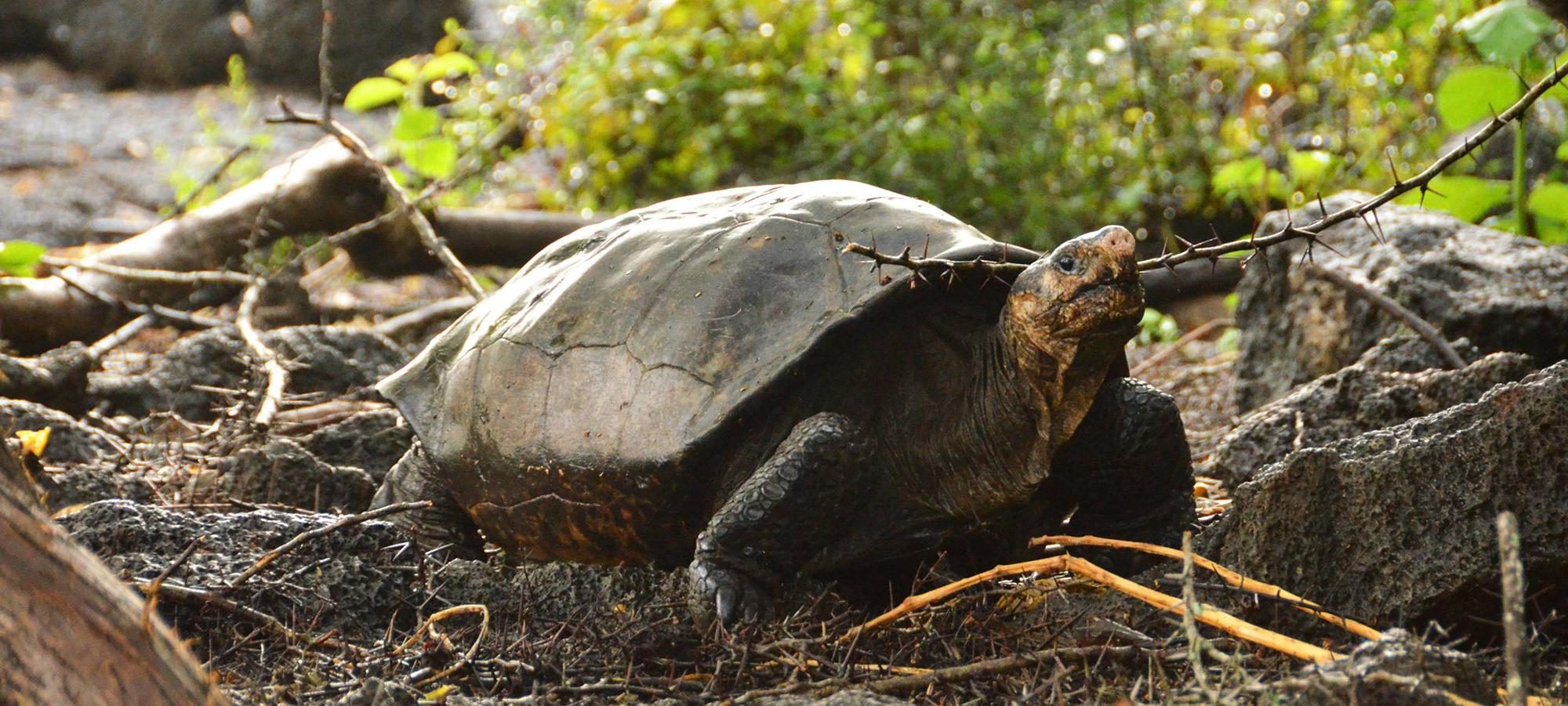Giant Tortoise Believed Extinct for 100 Years Found Alive in Galápagos
A rare giant tortoise species thought to be extinct for over 100 years has been found alive in the Galápagos Islands.
In 1906, Scientists identified a male “fantastic giant tortoise” (Chelonoidis phantasticus) on Fernandina Island. He had a huge, flared shell and several other distinguishing characteristics. Since that sighting, no other tortoises have been observed on Fernandina Island. The species was deemed extinct.
Now, over 100 years later, researchers have found a single female of the same species alive and living on the island. They named her Fernanda.
The volcanic Fernandina Island, uninhabited by humans and difficult to access, has sparse vegetation and rough terrain. Therefore when a team of conservationists and explorers first spotted Fernanda in 2019, many speculated she’d floated from a different island or been transported by humans. It seemed unlikely that she was a descendant of the 1906 male.
To confirm, Princeton University scientists compared a blood sample from Fernanda against a bone sample from the 1906 male, which is now housed in a museum. The genes matched closely and were distinct from the other 13 species of Galápagos giant tortoises. That makes Fernanda the second-ever Fernandina Island tortoise to be found and the only known living individual of her species.

Courtesy of the California Academy of SciencesThis male specimen collected in 1906 was the only known fantastic giant tortoise before the 2019 discovery.
“We simultaneously were able to show the connection between Fernanda and the other Fernandina tortoise, and also the distinctiveness of those two tortoises from species that we see on other islands,” says researcher Stephen Gaughran. “I was surprised, and then once it sank in, I was really excited about it.”
The scientists speculate there may be other tortoises on the island evading detection. They note “encouraging” signs that have been observed, such as scat and tracks. Expeditions are planned for the near future to look for them.
If a male from the same species can be found, the Fernandina Island tortoises may be able to breed their way back from the brink of extinction. Fernanda is over 50 and could live to around 200, so researchers are hopeful they still have some time to find her a suitable mate.
“Our hope is that there are still a couple of other of these tortoises out there on the island. But most likely there aren’t very many of them,” says Gaughran.
For now, Fernanda is living at the giant tortoise breeding center of Galápagos National Park, serving as a “conservation icon” in the ongoing extinction crisis.











